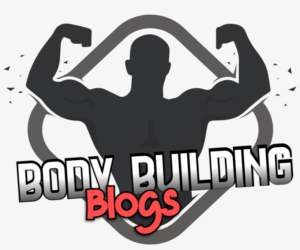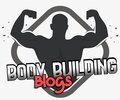Is it possible to gain muscle quickly? Yes, but you can’t just go to the gym and work out without a plan. A lot of people have trouble with not having enough time, hitting plateaus, or getting through a lot of wrong information on fitness. This blog gives you solid, science-based tips for speeding up muscle growth in a way that works. We’ll talk about useful strategies that will help you get results faster, whether you’re just starting out or stuck in a rut.
Learn How Muscles Grow
Hypertrophy, or muscular growth, happens when your muscle fibers get stronger and repair themselves after being strained by resistance training. Three things are very important to this process:
- Resistance Training: When you lift weights, it makes little breaks in your muscle fibers, which makes them grow.
- Food: Protein and calories give your body the energy it needs to heal and flourish.
- Recovery: Muscles don’t just grow in the gym; they expand while you rest.
Myth: You won’t get additional muscle by spending hours at the gym. It’s not just about working out a lot; it’s about working out smart.
Important Tips for Speeding Up Muscle Growth
a. Overloading in Stages
The key to building muscle is progressive loading. To keep your muscles working hard, slowly add more weight, reps, or intensity to your workouts. If you can bench press 135 pounds for 8 reps this week, try to do 140 pounds or 10 reps next week. Your muscles will adapt and stop growing if you don’t follow this plan.
Number one: It makes your body adapt by making your muscles bigger and stronger.
b. Concentrate on Compound Exercises
Compound workouts are the most efficient way to work out because they work more than one muscle group at a time. Think about squats (for your quadriceps, hamstrings, and glutes), deadlifts (for your back, glutes, and hamstrings), bench press (for your chest, shoulders, and triceps), and pull-ups (for your back and biceps). These exercises use more muscle fibers, which helps you increase strength faster than isolated workouts like bicep curls.
For the best results: Make sure to do 2–3 complex lifts in each workout.
c. Train with a Lot of Intensity and Volume
Hypertrophy works well with moderate to heavy weights (65–85% of your one-rep max) and 8–12 reps. Try to do 3–4 sets of each exercise, with a total of 10–20 sets for each muscle group per week. Push yourself near to failure on your last set, but don’t overtrain by paying attention to your body.
Don’t overtrain: If you’re sore for days or feel tired, lower the amount or intensity to avoid burning out.
d. Make the Most of Your Workout Split
Your workout split relies on your schedule and how well you can recuperate. Here’s a list:
- Full-Body (3 days/week): This is great for beginners or people who don’t have a lot of time. Every session works out all the major muscle groups.
- Push/Pull/Legs (PPL, 4–6 days/week): Separates exercises for the chest, shoulders, and triceps from activities for the back, biceps, and legs. Great for people who are already lifting weights.
- Upper/Lower Split (4 days/week): Works out the upper and lower body on different days. Balances how often you work out and how long it takes to recover.
PPL or upper/lower splits are best for quick results since they let you work each muscle group twice a week, which research suggest helps hypertrophy.
Don’t Forget About Nutrition
a. A Diet High in Protein
Muscle is made up of protein. Every day, try to get 0.7 to 1 gram of protein for every pound of body weight. For example, a 170-pound individual should get 120 to 170 grams of protein. Whey protein, chicken breast, eggs, Greek yogurt, and fish are all good things to eat after a workout because they are easy to digest.
Quick choices:
- A shake after working out: whey protein and a banana.
- Meals: Tofu stir-fry, grilled chicken with rice, or salmon with sweet potato.
b. Extra Calories (But Clean)
To build muscle, you need to eat 200–300 more calories than you expend each day. Eat foods that are high in nutrients, like lean meats, whole grains, fruits, veggies, and healthy fats like nuts and avocados. Avoid eating too much junk food since empty calories make you gain fat, not muscle.
Snacks that help build muscle:
- Yogurt with berries from Greece.
- Whole-grain toast with peanut butter.
- Protein bar with very little added sugar.
Everything Is Recovery
Your muscles don’t grow in the gym; they expand while you rest. Put these things in order of importance:
- Get 7 to 9 hours of sleep every night: During deep sleep, growth hormone levels rise, which helps muscles heal.
- Days Off: Give your muscles time to heal by taking at least one or two days off each week.
- Active Recovery: Light activities like walking or doing yoga get your blood flowing without putting too much stress on your muscles.
- Stretching: Stretching after a workout can help with soreness and flexibility.
Tip: No matter how hard you workout, you won’t see results if you don’t get enough sleep.
Optional: Supplements That Help Muscles Grow Quickly
Supplements aren’t magic, but they can assist. Stick to solutions that are safe and have been shown to work:
- Whey protein: A good way to meet your protein needs.
- Creatine Monohydrate: Increases muscle volume and strength (5g a day).
- BCAAs and EAAs: May help with recovery, especially if you train while fasting.
Warning: Supplements can’t take the place of diet or exercise. Talk to your doctor before you start, and don’t expect outcomes that aren’t natural; your genes establish your boundaries.
Things That People Often Do Wrong That Slow Them Down
To make development faster, stay away from these mistakes:
- Skipping Recovery: Working out too much stops progress and increases the risk of injury.
- Bad Form: Lifting greater weights instead of using good technique will hurt you, not help you grow.
- Inconsistent Routines: Not working out or changing your plans too often makes it hard to make progress.
- When You Compare Yourself to Others: Remember that your journey is different because of your genes and the time it takes.
A Sample Weekly Workout Plan
This is a 5-day PPL split that can help you build muscle faster (change the weights to fit your level):
Monday (Push):
- 4 sets of 8–12 repetitions on the bench press
- Overhead Press: Three sets of 8 to 12 reps
- Inclined Dumbbell Press: 3 sets of 10 to 12 repetitions
- Tricep dips: 3 sets of 12 to 15 reps
- Rest for 60 to 90 seconds between sets.
Tuesday (Pull):
- Four sets of six to eight repetitions of deadlifts
- Pull-Ups (or Lat Pulldown): do 3 sets of 8 to 12 reps.
- Barbell Rows: 3 sets of 8 to 12 reps
- Dumbbell bicep curls: 10–12 repetitions for 3 sets
- Take a break for 60 to 90 seconds.
Wednesday (Rest or Active Recovery):
- A light walk, yoga, or stretching for 20 to 30 minutes
Thursday (Legs):
- 4 sets of 8–12 squats
- Romanian Deadlifts: 3 sets of 10 to 12 reps
- Leg Press: 3 sets of 10 to 12 reps
- Three sets of 15 to 20 calf raises
- Take a break for 90 seconds.
Friday (Push):
- Incline Bench Press: 4 sets of 8 to 12 repetitions
- Shoulder press with dumbbells: 3 sets of 8 to 12 reps
- Cable Tricep Pushdowns: 3 sets of 12–15 reps
- Three sets of 12 to 15 lateral raises
- Rest for 60 to 90 seconds.
Saturday (Pull):
- Weighted Pull-Ups: 3 sets of 8 to 12 reps
- Dumbbell Rows: 3 sets of 10 to 12 reps
- 3 sets of 12–15 face pulls
- Hammer Curls: 10–12 reps for 3 sets
- Take a break for 60 to 90 seconds.
Sunday (Rest or Active Recovery)
How Soon Can You Expect Results?
Results depend on where you start, how consistent you are, and your genes. Here’s a chronology that makes sense:
- 4 Weeks: Noticeable strength gains; some muscular definition.
- 8 Weeks: Muscles are getting bigger, especially in the chest, arms, and legs.
- 12 Weeks: With the right diet and training, you may make big gains in size and strength.
Mindset: Shortcuts don’t work as well as consistency. Track your lifts to tell you to stop comparing yourself to others and focus on your own improvement.
Final Thoughts
You may make your muscles grow as much as possible in a short amount of time by using the right methods, such as progressive overload, compound lifts, smart diet, and proper recuperation. Make a clear plan today, keep track of your progress (how much weight you lift and how big your body is), and stick to it. The gym is like a lab for you. Try new things, stay focused, and see your muscles improve!


